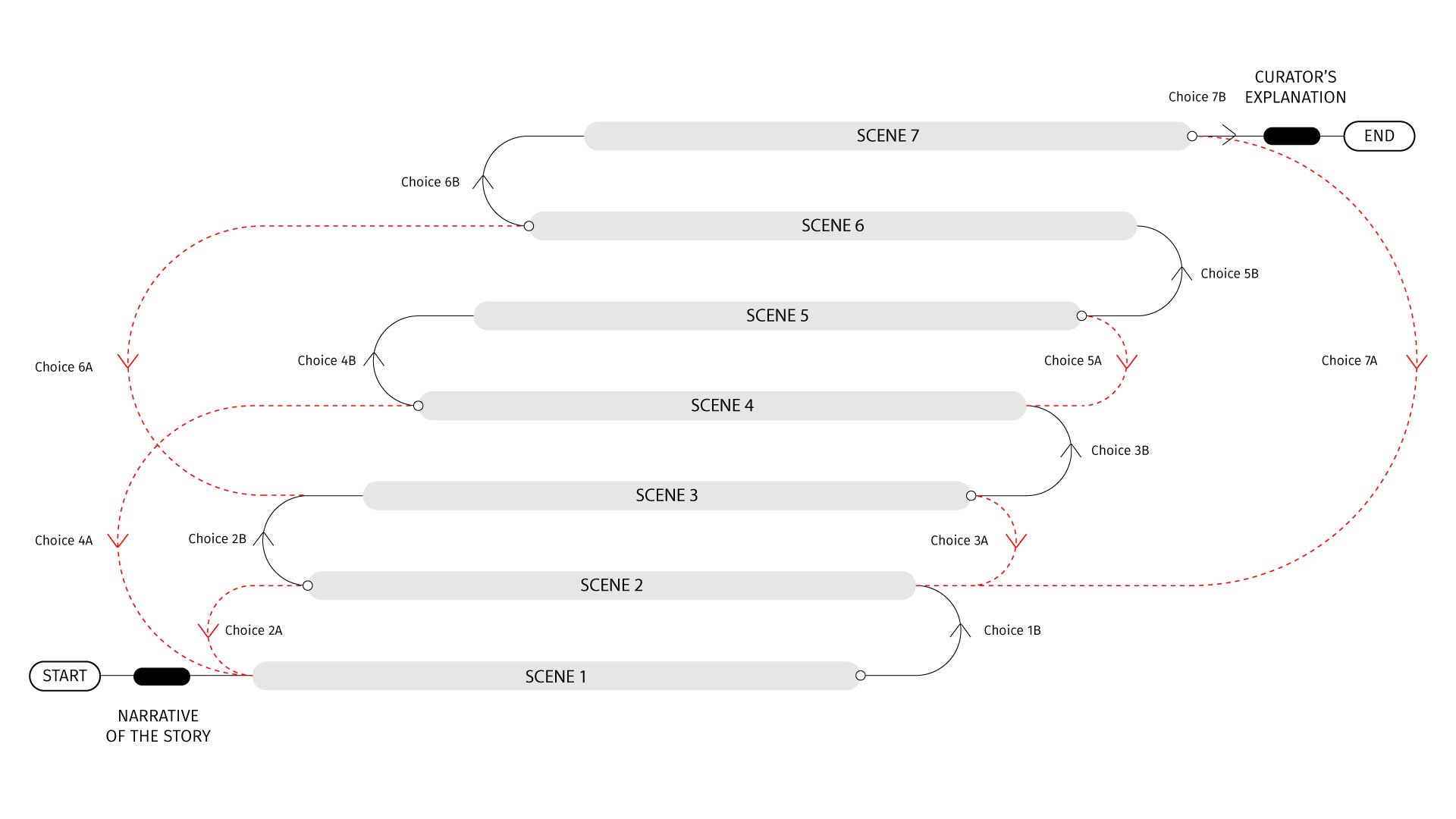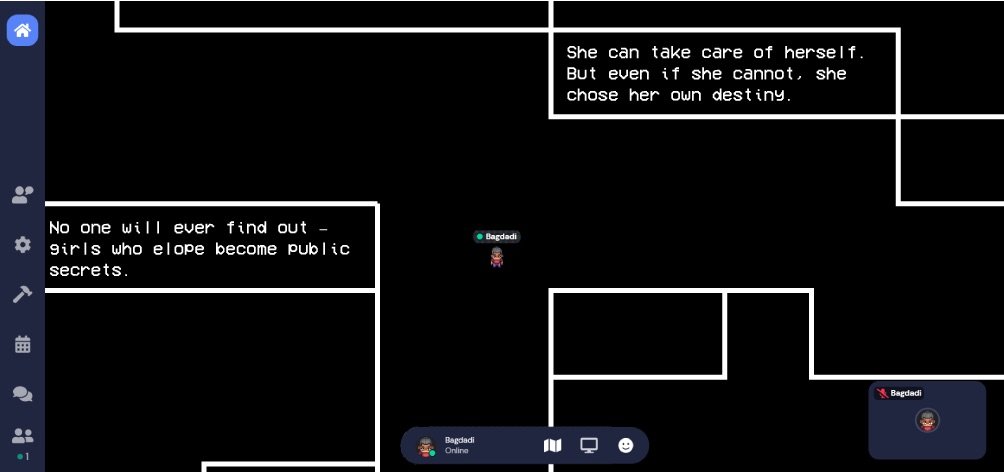The Serpent of a Thousand Coils
Navigating the anxiety labyrinth
The Serpent of a Thousand Coils presents an empathetic insight into the minds of people with Obsessive Compulsive Disorders (OCD). The interactive game moves through a dizzying array of paths: a labyrinth; the collage of the surrealists; a neural network; the Snakes and Ladders' board game. Translating the internal topographies of an anxious mind into an architectural layout, the artists tailor every participant’s journey to their individual fears. The questions at each juncture of this exhibit appears to require rational and logical thinking; however, while the game initially seems responsive to this, it soon engineers an endless loop of speculative hypotheses. The Serpent of A Thousand Coils presents an interactive opportunity to engage with the anxious mind.
Medium: Virtual Convening Platform, Images, Videos, Audio, Text
Year: 2022
Process
A system of pathways and choices within the game.
Architectural diagram outlining the movement between levels within the game.
Junctions offer choices to questions - a mockup on Gather
Emotive moodscape exploring a visual cues within the game.
Team
Anuj Malhotra
Archivist
Anuj Malhotra is the founder of Lightcube, an acclaimed film collective, regularly touted as one of the leading resources for pioneering research and presentation of image-forms in the country. He also helped conceive the model for The Dhenuki Cinema Project, a multifaceted and versatile project that mobilizes populations in rural areas of the country through the medium of film. Anuj also publishes Umbra, the country’s only newspaper devoted to the study of alternative film in India, alongwith handling the curatorial duties for The Garga Archives, a digital museum dedicated to the life and work of B.D. Garga. His films have screened at various festivals and venues across the country and internationally. He has presented installation-based work, papers or group shows at such forums as the Sheffield DocFest, Goldsmiths University (London), Alternative Film and Video Research Forum, among others.
Gaurav Puri
Filmmaker
Gaurav Puri is a student of Film Direction and Screenplay Writing at the Satyajit Ray Film Television Institute, where he recently completed his diploma film. Puri began his career as a researcher for documentary films, where he learnt the nuances of ethnographic and anthropological filmmaking techniques. His student films have been screened at various festivals. His interests lie in audiovisual forms that intersect various markers, such as, fiction, documentary and video-art.
Ketan Dua
Actor and Filmmaker
Ketan Dua is an actor and filmmaker based in New Delhi, India. He has received training in physical theatre. His past works include designing and facilitating a visual literacy workshop programme with Lightcube and The Community Library Project. He likes to experiment with images and sound, and exploring dimensions of his varied interests on audio-visual and theatrical productions.
Mahesh S
Artist
Mahesh S is a Bangalore-based self-taught artist dabbling with video, text, and photography. He has a background in research and brand strategy. He recently finished his first experimental documentary, entitled Tales from Building No. 37, and photo book based on the history, architecture and cultural memory of a government building in Bangalore. This project was supported by a grant under the India Foundation of the Arts (IFA).
Swati Khanolkar
Clinical Psychologist
Swati Khanolkar, a trained clinical psychologist, is an accomplished Rational Emotive Behaviour Therapy (REBT) practitioner. She is an Associate Fellow and Supervisor of the Albert Ellis Institute, New York. She has taught psychology at both graduate and postgraduate levels at Shreemati Nathibai Damodar Thackersey Women's University (SNDT) University, Mumbai and affiliated colleges. She has conducted training programs for various corporations. She is the Director of In Vivo — The Mumbai Centre for REBT under which she conducts regular REBT training programs for students and professionals in psychology.
Architecture for Dialogue
Abhimanyu Singhal and Depanshu Gola co-run Architecture for Dialogue (Spatial Design and Visual Layout), a research and design practice pushing the boundaries of architecture across physical and digital mediums. Their experience in physical placemaking informs the work in the digital domain—enabling immersion, interaction and collective action within virtual environments.

















